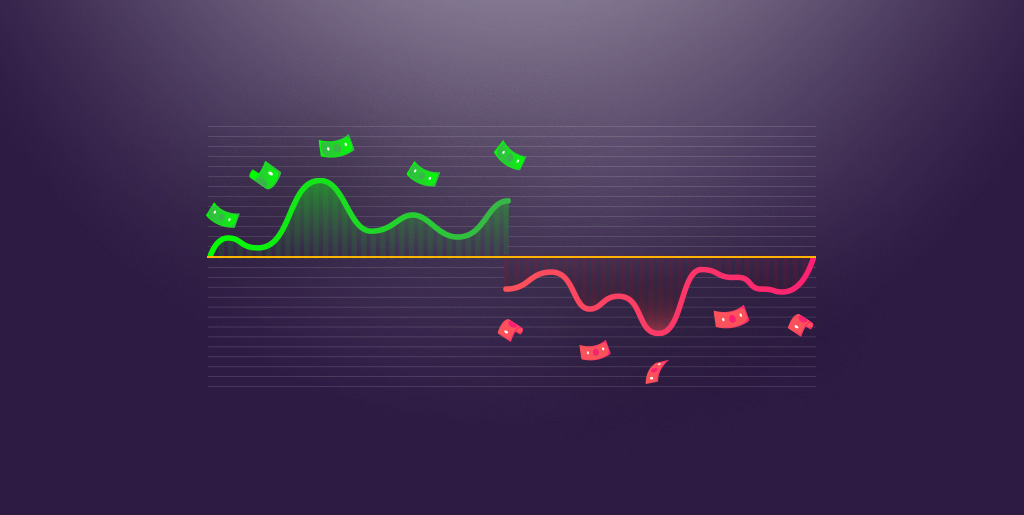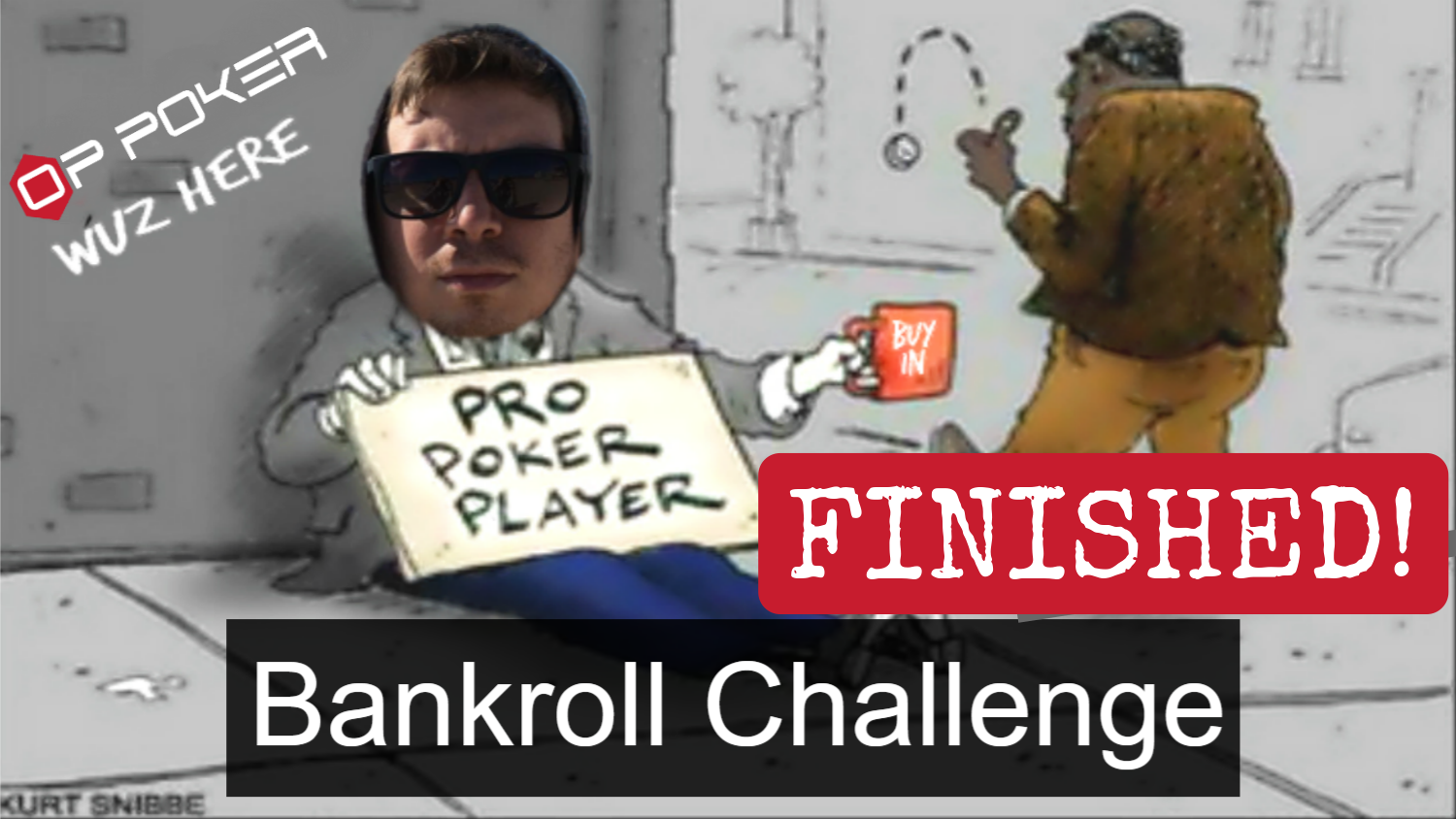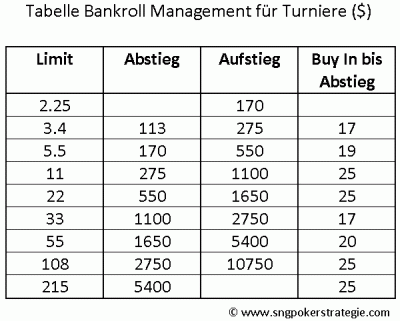
- Poker Bankroll Management Fixed Limits
- Poker Bankroll Management Fixed Limit Rules
- Poker Bankroll Management Fixed Limit Calculation
- Poker Bankroll Management Fixed Limited
Poker Bankroll Management Fixed Limits
The generally accepted minimum bankroll for fixed limit ring games is 300 big bets. That means if you want to play $0.50/$1.00 fixed limit, you should have at least $300 in your bankroll. As you move up in stakes, you should strongly consider bumping that up to 600 big bets. The best poker bankroll management strategy for beginners is to have 50 buyins for any limit you are playing. Experienced poker players can get by with a bankroll of 30 buyins. And for professional poker players I recommend using a bankroll management strategy of 100 buyins for any limit you are playing. A professional player´s bankroll management may well be influenced by outside factors such as staking and sponsorship but, as a guide, if you want to become a professional poker player, you should have six months money behind you and a bankroll big enough to support forty-five buy-ins for no limit/pot limit cash games, thirty buy-ins for.
No matter which poker format you play, bankroll management is the key to avoiding going broke. There are few concepts in poker that are as important as bankroll management. The nice thing about bankroll management is that it's an easy concept to wrap your mind around. Once you know what the bankroll recommendations are for each poker format, no more thinking is necessary.
The proper poker bankroll depends primarily on your risk tolerance and the poker format you play. If you don't mind going broke and giving up on poker, you can walk in to any poker game with any amount of money and have nothing to worry about. That's all fairly obvious, however, so these poker bankroll recommendations are going to be based on the assumption that you want to stay in the game indefinitely with minimal chance of going broke.
One of the key skills in bankroll management is not just knowing the right bankroll recommendations; it's knowing when to move down in stakes. Any time you experience a downswing, you must be able to move down in stakes when your bankroll dictates. If you refuse to move down, you will become under-bankrolled for your game and be in serious danger of burning through your entire bankroll.

Moving down in stakes is not a fun thing to do but we all have to do it sometimes. Poker is a game of skill in the long run, but short term variance will make you go through all sorts of ups and downs. If you have the self control to move down when your bankroll shrinks, you will never have to make another deposit again.
Bankroll for Fixed Limit Cash Games = 300 to 600 Big Bets
Fixed limit cash games require a bankroll of 300 to 600 big bets. I recommend you err on the side of caution and stick closer to 600 big bets. Today's fixed limit cash games are getting more difficult, which results in smaller edges and greater volatility. This may sound like a huge bankroll but it's what most seroius players recommend.
Example: If you have a bankroll of about $1000, you will want to play in games of $0.50/$1.00 or $1.00/$2.00. I know that sounds ridiculous but it's not that bad. A few big winning sessions will have you moving up in stakes faster than you realize. Plus, you'll be glad you have a huge bankroll when you hit your first 100 big-bet downswing.

Bankroll for No Limit Cash Games = 20 to 40 Buy-Ins

The absolute minimum bankroll for no limit cash games is 20 buy-ins, but I recommend 40 buy-ins or more. So if you have a bankroll of $1000, you should play in games of $0.10/$0.25 ($25 buyin) or lower. As your bankroll grows or shrinks, you can move up or down in stakes accordingly.
If you're a casual poker player, 20 buy-ins is probably plenty. You have a greater chance of going broke this way, but you can avoid that by practicing strict self control. As soon as your bankroll dips below 20 buy-ins, you must move down in stakes. If you want an extra margin of safety or if you play seriously, 40 buy-ins is a much better idea.
Bankroll for Multi Table Tournaments = 100 Avg. Buy-Ins
Multi table tournaments are the swingiest form of poker and therefore require the largest bankroll (relatively speaking). If you want to play in multi-table tournaments and avoid going broke, you should play in tournaments that cost 1/100th the size of your total bankroll. So if you have a $1000 bankroll, you should stick with $10 MTTs or lower.
Poker Bankroll Management Fixed Limit Rules
Multi-table poker tournaments require a huge bankroll because you can go for a long time without cashing in one. This is especially true if you play in tournaments that have large player fields. It's not easy to cash in these tournaments, but when you do, you get paid very nicely. And don't let the large bankroll recommendations get you down; a single win in a tournament can move you up to much higher stakes overnight.
Bankroll for Sit-n-Go Tournaments = 30 to 50 Avg. Buy-Ins
A solid bankroll for sit-n-go tournaments is about 30 to 50 buy-ins per level. So if you have a $1000 bankroll, you should play in $33 sit-n-gos or lower. Sit and go tournaments have quite a bit of variance but they aren't as bad as multi-table tournaments in that regard. It's still possible to go on bad runs, however, so you have to be ready to move down if your bankroll dips below that 30 or 50 buyin mark you have set.
Lady gaga poker face makeup tutorial. Being a HUGE fan of Lady GaGa, I've gotten hundreds of request to replicate her eye makeup in Poker Face.but I thought.why not just go all out and just r.
Poker Bankroll Management Fixed Limit Calculation
Check out this article on the BestPokerSites.org blog to learn more about sit and go bankroll management.
All Poker Formats: Increase Your Bankroll at Higher Stakes
As you move up in stakes in poker, it is a smart idea to slowly increase your bankroll requirements. Every time you move up in stakes, the opposition gets a little more difficult and your advantage gets a little smaller. This results in increased variance, which means you will have bigger swings on a more frequent basis.
For example, I know of many no-limit players who won't play in $10/$20 games ($2,000 buyin) without a bankroll of $100,000 or more. That is a lot of money by itself, but it only represents 50 buy-ins at that level. If you play professionally, you may even want a bankroll of 100 buy-ins so that you can still pay the bills during bad months.
The same thing goes for all poker formats. As you move up in stakes, the opponents get more difficult and a large bankroll becomes increasingly important. It will take you longer to move up to the higher levels, but you'll be glad you did. Reaching the highest stakes of poker (with a proper bankroll) is one of the most gratifying moments in the game.
Gambling Control Bill 2013 General Scheme. July 2013. This document has no legal effect. It contains proposals for the licensing and regulation of gambling in Ireland. Draft legislation will be prepared on the basis of these proposals, for presentation to the Oireachtas and enactment. The Gambling Control Bill of 2013 represents a decent starting point in developing player protection and much needed treatment services and research facilities for Gambling Disorder. The drafting and enactment of the Gambling Control Bill of 2013 appears to have slipped from legislative priority. The sooner this bill is enacted the better. Gambling Control Bill 2013 This Scheme proposes a new and comprehensive framework for the regulation (including licensing) of gambling in Ireland. Agencies and offices. Gambling control bill 2013. The Gambling Control Act provides for the licensure of certain individuals and establishments involved in various gambling activities, and for the regulation of those activities, by the California Gambling Control Commission. For purposes of the act, existing law defines 'key employee' as any natural person employed in the operation of a.

- Poker Bankroll Management Fixed Limits
- Poker Bankroll Management Fixed Limit Rules
- Poker Bankroll Management Fixed Limit Calculation
- Poker Bankroll Management Fixed Limited
Poker Bankroll Management Fixed Limits
The generally accepted minimum bankroll for fixed limit ring games is 300 big bets. That means if you want to play $0.50/$1.00 fixed limit, you should have at least $300 in your bankroll. As you move up in stakes, you should strongly consider bumping that up to 600 big bets. The best poker bankroll management strategy for beginners is to have 50 buyins for any limit you are playing. Experienced poker players can get by with a bankroll of 30 buyins. And for professional poker players I recommend using a bankroll management strategy of 100 buyins for any limit you are playing. A professional player´s bankroll management may well be influenced by outside factors such as staking and sponsorship but, as a guide, if you want to become a professional poker player, you should have six months money behind you and a bankroll big enough to support forty-five buy-ins for no limit/pot limit cash games, thirty buy-ins for.
No matter which poker format you play, bankroll management is the key to avoiding going broke. There are few concepts in poker that are as important as bankroll management. The nice thing about bankroll management is that it's an easy concept to wrap your mind around. Once you know what the bankroll recommendations are for each poker format, no more thinking is necessary.
The proper poker bankroll depends primarily on your risk tolerance and the poker format you play. If you don't mind going broke and giving up on poker, you can walk in to any poker game with any amount of money and have nothing to worry about. That's all fairly obvious, however, so these poker bankroll recommendations are going to be based on the assumption that you want to stay in the game indefinitely with minimal chance of going broke.
One of the key skills in bankroll management is not just knowing the right bankroll recommendations; it's knowing when to move down in stakes. Any time you experience a downswing, you must be able to move down in stakes when your bankroll dictates. If you refuse to move down, you will become under-bankrolled for your game and be in serious danger of burning through your entire bankroll.
Moving down in stakes is not a fun thing to do but we all have to do it sometimes. Poker is a game of skill in the long run, but short term variance will make you go through all sorts of ups and downs. If you have the self control to move down when your bankroll shrinks, you will never have to make another deposit again.
Bankroll for Fixed Limit Cash Games = 300 to 600 Big Bets
Fixed limit cash games require a bankroll of 300 to 600 big bets. I recommend you err on the side of caution and stick closer to 600 big bets. Today's fixed limit cash games are getting more difficult, which results in smaller edges and greater volatility. This may sound like a huge bankroll but it's what most seroius players recommend.
Example: If you have a bankroll of about $1000, you will want to play in games of $0.50/$1.00 or $1.00/$2.00. I know that sounds ridiculous but it's not that bad. A few big winning sessions will have you moving up in stakes faster than you realize. Plus, you'll be glad you have a huge bankroll when you hit your first 100 big-bet downswing.
Bankroll for No Limit Cash Games = 20 to 40 Buy-Ins
The absolute minimum bankroll for no limit cash games is 20 buy-ins, but I recommend 40 buy-ins or more. So if you have a bankroll of $1000, you should play in games of $0.10/$0.25 ($25 buyin) or lower. As your bankroll grows or shrinks, you can move up or down in stakes accordingly.
If you're a casual poker player, 20 buy-ins is probably plenty. You have a greater chance of going broke this way, but you can avoid that by practicing strict self control. As soon as your bankroll dips below 20 buy-ins, you must move down in stakes. If you want an extra margin of safety or if you play seriously, 40 buy-ins is a much better idea.
Bankroll for Multi Table Tournaments = 100 Avg. Buy-Ins
Multi table tournaments are the swingiest form of poker and therefore require the largest bankroll (relatively speaking). If you want to play in multi-table tournaments and avoid going broke, you should play in tournaments that cost 1/100th the size of your total bankroll. So if you have a $1000 bankroll, you should stick with $10 MTTs or lower.
Poker Bankroll Management Fixed Limit Rules
Multi-table poker tournaments require a huge bankroll because you can go for a long time without cashing in one. This is especially true if you play in tournaments that have large player fields. It's not easy to cash in these tournaments, but when you do, you get paid very nicely. And don't let the large bankroll recommendations get you down; a single win in a tournament can move you up to much higher stakes overnight.
Bankroll for Sit-n-Go Tournaments = 30 to 50 Avg. Buy-Ins
A solid bankroll for sit-n-go tournaments is about 30 to 50 buy-ins per level. So if you have a $1000 bankroll, you should play in $33 sit-n-gos or lower. Sit and go tournaments have quite a bit of variance but they aren't as bad as multi-table tournaments in that regard. It's still possible to go on bad runs, however, so you have to be ready to move down if your bankroll dips below that 30 or 50 buyin mark you have set.
Lady gaga poker face makeup tutorial. Being a HUGE fan of Lady GaGa, I've gotten hundreds of request to replicate her eye makeup in Poker Face.but I thought.why not just go all out and just r.
Poker Bankroll Management Fixed Limit Calculation
Check out this article on the BestPokerSites.org blog to learn more about sit and go bankroll management.
All Poker Formats: Increase Your Bankroll at Higher Stakes
As you move up in stakes in poker, it is a smart idea to slowly increase your bankroll requirements. Every time you move up in stakes, the opposition gets a little more difficult and your advantage gets a little smaller. This results in increased variance, which means you will have bigger swings on a more frequent basis.
For example, I know of many no-limit players who won't play in $10/$20 games ($2,000 buyin) without a bankroll of $100,000 or more. That is a lot of money by itself, but it only represents 50 buy-ins at that level. If you play professionally, you may even want a bankroll of 100 buy-ins so that you can still pay the bills during bad months.
The same thing goes for all poker formats. As you move up in stakes, the opponents get more difficult and a large bankroll becomes increasingly important. It will take you longer to move up to the higher levels, but you'll be glad you did. Reaching the highest stakes of poker (with a proper bankroll) is one of the most gratifying moments in the game.
Gambling Control Bill 2013 General Scheme. July 2013. This document has no legal effect. It contains proposals for the licensing and regulation of gambling in Ireland. Draft legislation will be prepared on the basis of these proposals, for presentation to the Oireachtas and enactment. The Gambling Control Bill of 2013 represents a decent starting point in developing player protection and much needed treatment services and research facilities for Gambling Disorder. The drafting and enactment of the Gambling Control Bill of 2013 appears to have slipped from legislative priority. The sooner this bill is enacted the better. Gambling Control Bill 2013 This Scheme proposes a new and comprehensive framework for the regulation (including licensing) of gambling in Ireland. Agencies and offices. Gambling control bill 2013. The Gambling Control Act provides for the licensure of certain individuals and establishments involved in various gambling activities, and for the regulation of those activities, by the California Gambling Control Commission. For purposes of the act, existing law defines 'key employee' as any natural person employed in the operation of a.
Poker Bankroll Management Fixed Limited
Further Reading:
Jonathan Wanchalk wrote an article on advanced bankroll management that has a few different suggestions - check it out for another perspective on the topic. Also, read our article about heads up bankroll management.